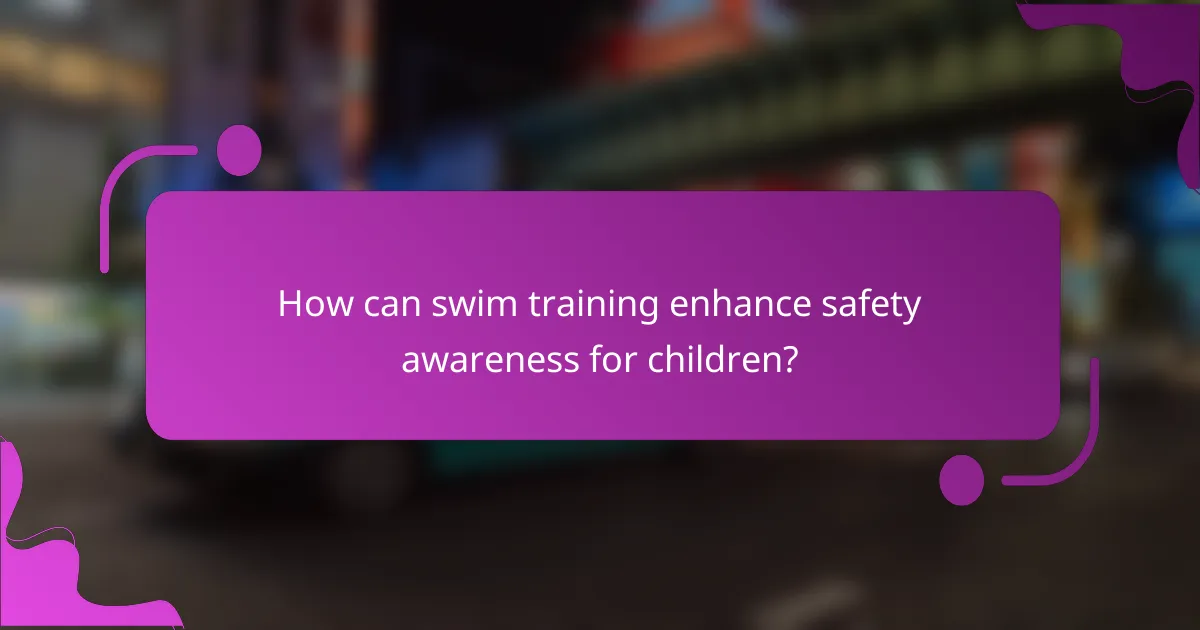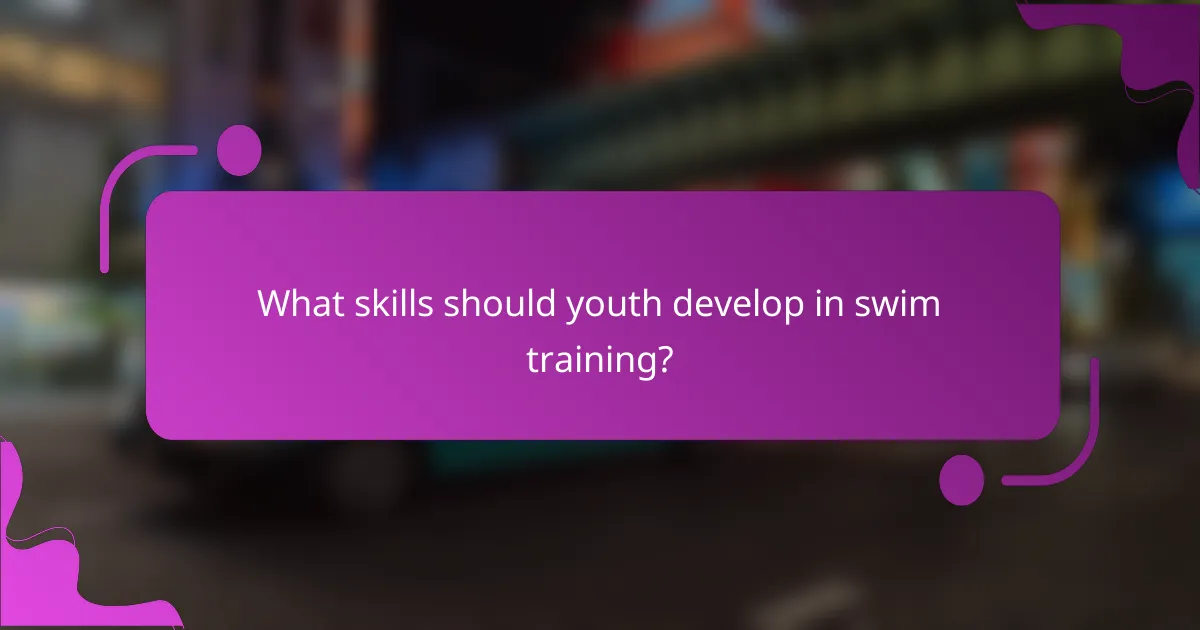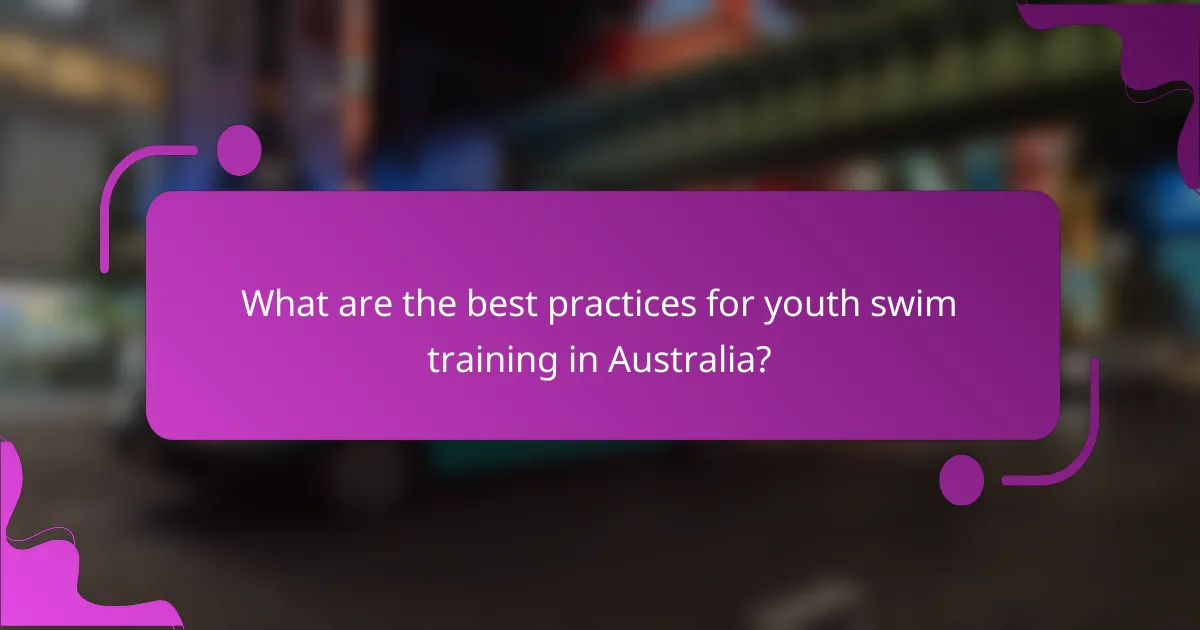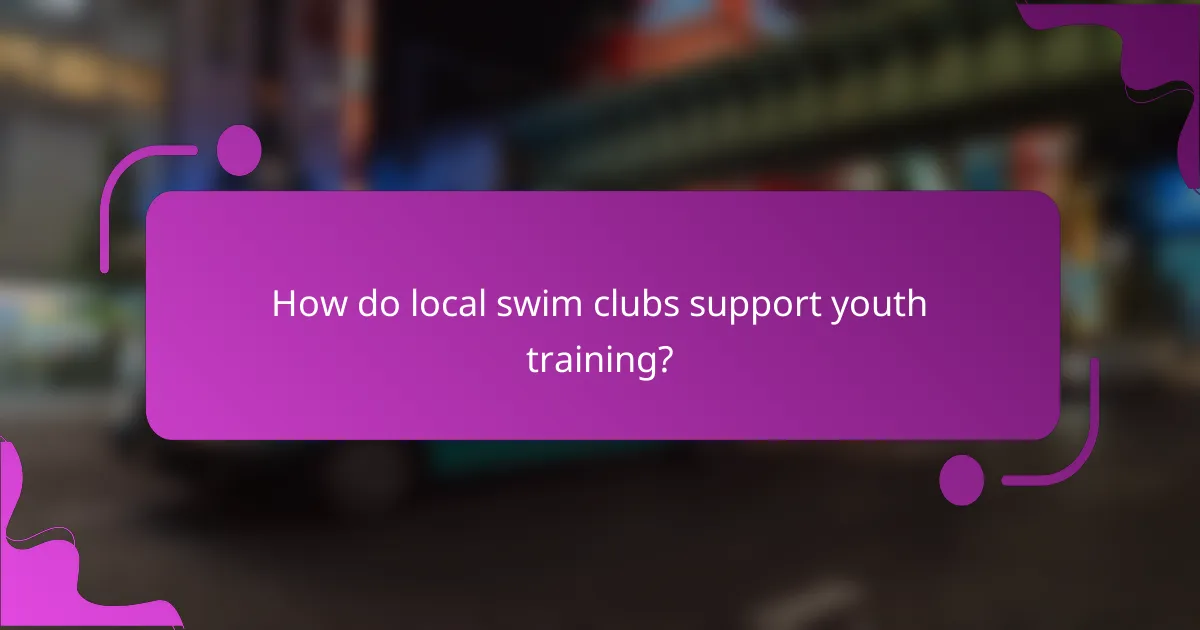Youth swim training in Australia emphasizes age-appropriate drills that foster fundamental skills while prioritizing safety and enjoyment in the water. By focusing on technique, coordination, and confidence, these training sessions help young swimmers develop essential skills and awareness of water environments, ensuring they can recognize dangers and follow safety protocols. Additionally, improving endurance, stroke efficiency, and breathing techniques enhances their overall performance and promotes a safe, confident approach to aquatic activities.

What are age-appropriate swim drills for youth in Australia?
Age-appropriate swim drills for youth in Australia focus on developing fundamental skills while ensuring safety and enjoyment in the water. These drills cater to various skill levels and age groups, emphasizing technique, coordination, and confidence.
Freestyle stroke drills
Freestyle stroke drills help young swimmers improve their technique and efficiency. Simple exercises like the “catch-up drill” encourage proper arm movement by having swimmers extend one arm while the other completes a stroke. Another effective drill is the “zipper drill,” where swimmers keep their hands close to their bodies, simulating a zipper motion to enhance body rotation.
Swimmers should practice these drills in short intervals, focusing on maintaining a streamlined position and proper breathing. Aim for sessions of around 20-30 minutes, allowing for breaks to prevent fatigue.
Backstroke drills
Backstroke drills are essential for teaching youth swimmers how to maintain body position and rhythm. The “single arm backstroke drill” allows swimmers to focus on one arm at a time, promoting balance and coordination. Additionally, the “backstroke kick drill” emphasizes the importance of a strong kick, which is crucial for propulsion.
Encourage swimmers to practice these drills in shallow water to build confidence and ensure safety. Sessions should last about 15-25 minutes, with frequent feedback to correct form and technique.
Breaststroke drills
Breaststroke drills focus on the unique timing and technique of the stroke. The “pull and glide drill” helps swimmers understand the importance of a strong pull followed by a glide phase, allowing for efficient movement through the water. Another useful drill is the “frog kick drill,” which emphasizes the correct kicking motion necessary for effective propulsion.
Practice these drills in a controlled environment, ideally in a pool with a depth suitable for the swimmers’ comfort. Sessions can be around 20-30 minutes, incorporating rest periods to maintain energy levels.
Diving techniques
Diving techniques are crucial for youth swimmers, as they enhance their entry into the water and overall confidence. Start with the “sitting dive” from the pool edge, allowing swimmers to focus on body position and entry angle. Progress to the “kneeling dive” and then to a standing dive as they gain confidence and skill.
Ensure that all diving practice occurs in designated areas of the pool, with adequate supervision. Limit sessions to about 15-20 minutes to prevent fatigue and maintain focus on technique.
Water safety drills
Water safety drills are vital for teaching youth swimmers how to respond in emergencies. Basic drills include practicing floating on their backs, treading water, and safe entry and exit techniques. Incorporate scenarios where swimmers must assist a peer or signal for help to reinforce safety awareness.
Conduct these drills in a safe environment, ideally with lifeguards present. Sessions should be interactive and engaging, lasting around 30 minutes to ensure retention of safety skills while keeping the atmosphere fun and educational.

How can swim training enhance safety awareness for children?
Swim training plays a crucial role in enhancing safety awareness for children by teaching them essential skills and knowledge about water environments. Through structured drills and education, young swimmers learn to recognize potential dangers, follow safety protocols, and develop confidence in their abilities.
Understanding water hazards
Understanding water hazards is vital for children’s safety during swim training. Common hazards include strong currents, sudden drop-offs, and submerged objects. Instructors should emphasize the importance of assessing the swimming environment before entering the water.
Children should be taught to identify different types of water hazards, such as those found in pools, lakes, and oceans. For instance, in open water, they should be aware of changing weather conditions and how they can affect safety.
Importance of buddy systems
Implementing a buddy system is essential for ensuring safety during swim training. Children should always swim with a partner to enhance supervision and support. This practice helps them stay accountable and encourages communication about safety concerns.
Instructors can create buddy pairs based on skill levels, ensuring that each child feels comfortable and secure. Regularly reminding children to check in with their buddy can reinforce this safety measure.
Recognizing signs of fatigue
Recognizing signs of fatigue is critical for maintaining safety in the water. Children should be educated about physical cues such as heavy breathing, decreased energy, and difficulty keeping their heads above water. These indicators can signal the need for rest or assistance.
Instructors should encourage children to take breaks during training sessions and to communicate openly about how they feel. Establishing a simple signal, like raising a hand, can help children alert their buddies or instructors when they need help.

What skills should youth develop in swim training?
Youth swimmers should focus on developing endurance, stroke efficiency, and breathing techniques to enhance their overall performance in the water. These skills not only improve swimming ability but also promote safety and confidence during aquatic activities.
Endurance building
Endurance is crucial for young swimmers as it allows them to swim longer distances without fatigue. Training sessions should incorporate a mix of short sprints and longer swims, gradually increasing the distance as their fitness improves. For instance, starting with sets of 50 meters and progressing to 200 meters can help build stamina effectively.
Incorporating interval training can also be beneficial. Swimmers can alternate between fast-paced laps and recovery periods, which enhances both aerobic and anaerobic endurance. A common approach is to swim 4 x 100 meters with rest intervals, adjusting the pace to challenge their limits.
Stroke efficiency
Stroke efficiency refers to the ability to swim with minimal energy expenditure while maximizing speed. Youth swimmers should focus on mastering the four main strokes: freestyle, backstroke, breaststroke, and butterfly. Drills that emphasize technique, such as using kickboards or fins, can help improve their form and reduce drag in the water.
Regular video analysis can also aid in identifying areas for improvement. Coaches can record swimmers and provide feedback on their stroke mechanics, helping them make necessary adjustments. Practicing drills like catch-up freestyle or single-arm strokes can refine their efficiency further.
Breathing techniques
Proper breathing techniques are essential for maintaining rhythm and stamina in swimming. Youth swimmers should practice bilateral breathing in freestyle to promote balance and reduce strain on one side of the body. This involves breathing on both sides during training sessions, which can be practiced through drills like 3-3-3, where swimmers take three strokes on one side, three on the other, and repeat.
Additionally, teaching swimmers to exhale underwater can help them take in air more efficiently when they surface. Practicing this technique during drills can enhance their comfort and confidence in the water. Coaches should encourage swimmers to integrate breathing into their stroke rhythm to prevent gasping for air and maintain a steady pace.

What are the best practices for youth swim training in Australia?
Best practices for youth swim training in Australia focus on age-appropriate drills, safety awareness, and skill development. These practices ensure that young swimmers not only improve their technique but also understand the importance of safety in and around water.
Qualified coaching standards
Qualified coaching standards are essential for effective youth swim training. Coaches should hold recognized certifications, such as those from Swimming Australia or other relevant organizations, to ensure they are equipped with the latest techniques and safety protocols.
Additionally, ongoing professional development is crucial. Coaches should regularly attend workshops and training sessions to stay updated on best practices and new methodologies in swim training.
Regular safety assessments
Regular safety assessments are vital to maintaining a secure training environment for young swimmers. These assessments should include evaluating the swimming facility, ensuring that safety equipment is accessible, and reviewing emergency procedures with both coaches and swimmers.
Moreover, it is beneficial to conduct drills that simulate emergency situations, helping swimmers to react appropriately. Parents should also be involved in safety discussions to reinforce the importance of water safety at home and during training.

How do local swim clubs support youth training?
Local swim clubs play a crucial role in supporting youth training by providing structured programs, experienced coaching, and a safe environment for skill development. These clubs often focus on age-appropriate drills and safety awareness, ensuring that young swimmers progress effectively while enjoying the sport.
Community engagement programs
Community engagement programs offered by swim clubs foster a sense of belonging and encourage participation among youth. These initiatives often include swim meets, family swim nights, and open houses that invite local families to experience the club’s offerings. Such events help build relationships between coaches, swimmers, and parents.
Additionally, many clubs partner with schools and local organizations to provide swimming lessons and water safety courses. These collaborations not only enhance skill development but also promote awareness of the importance of swimming as a life skill, particularly in areas with water access.
To maximize the benefits of community engagement, clubs should consider offering scholarships or reduced fees for families in need, ensuring that financial barriers do not prevent youth from participating in swim training programs.
